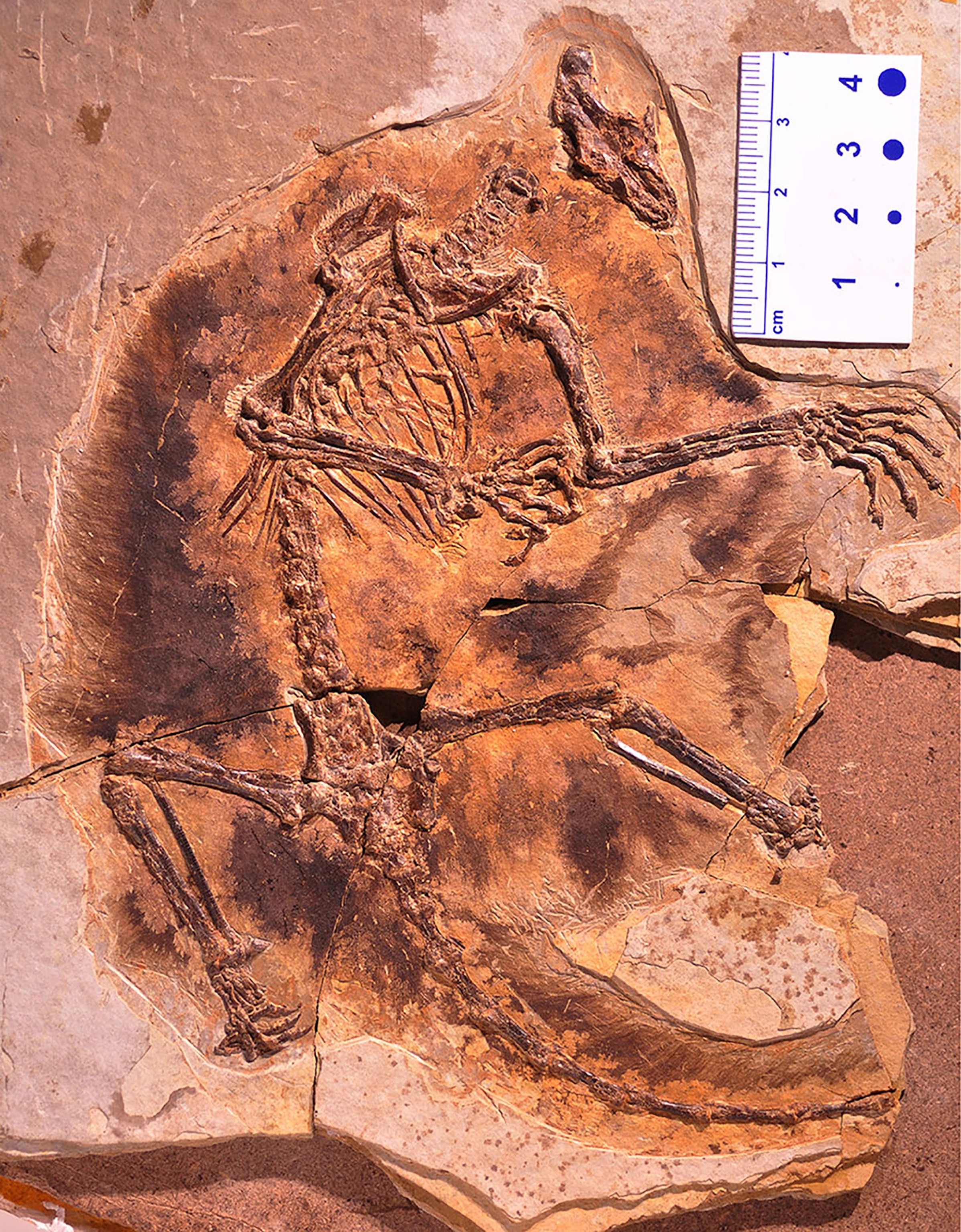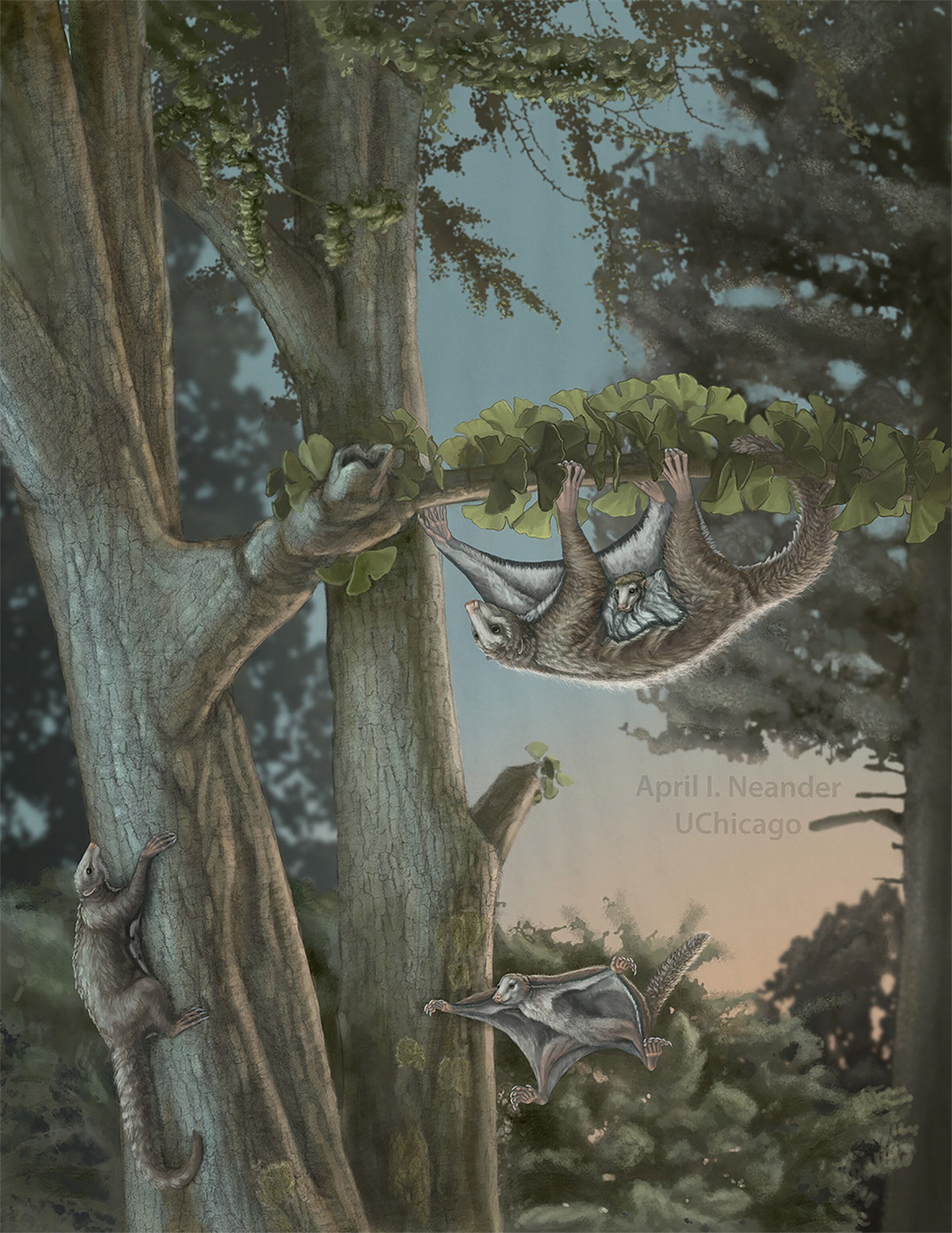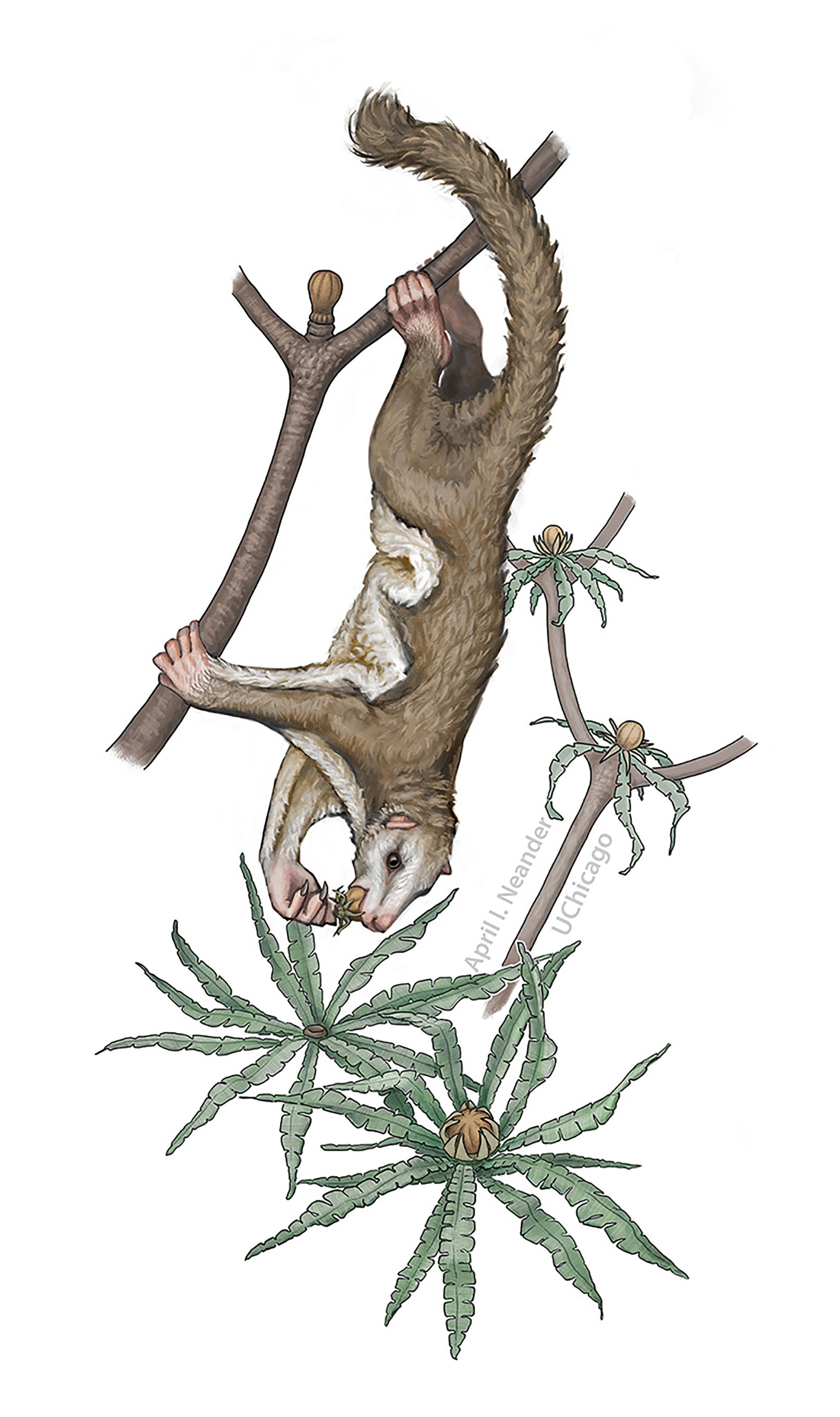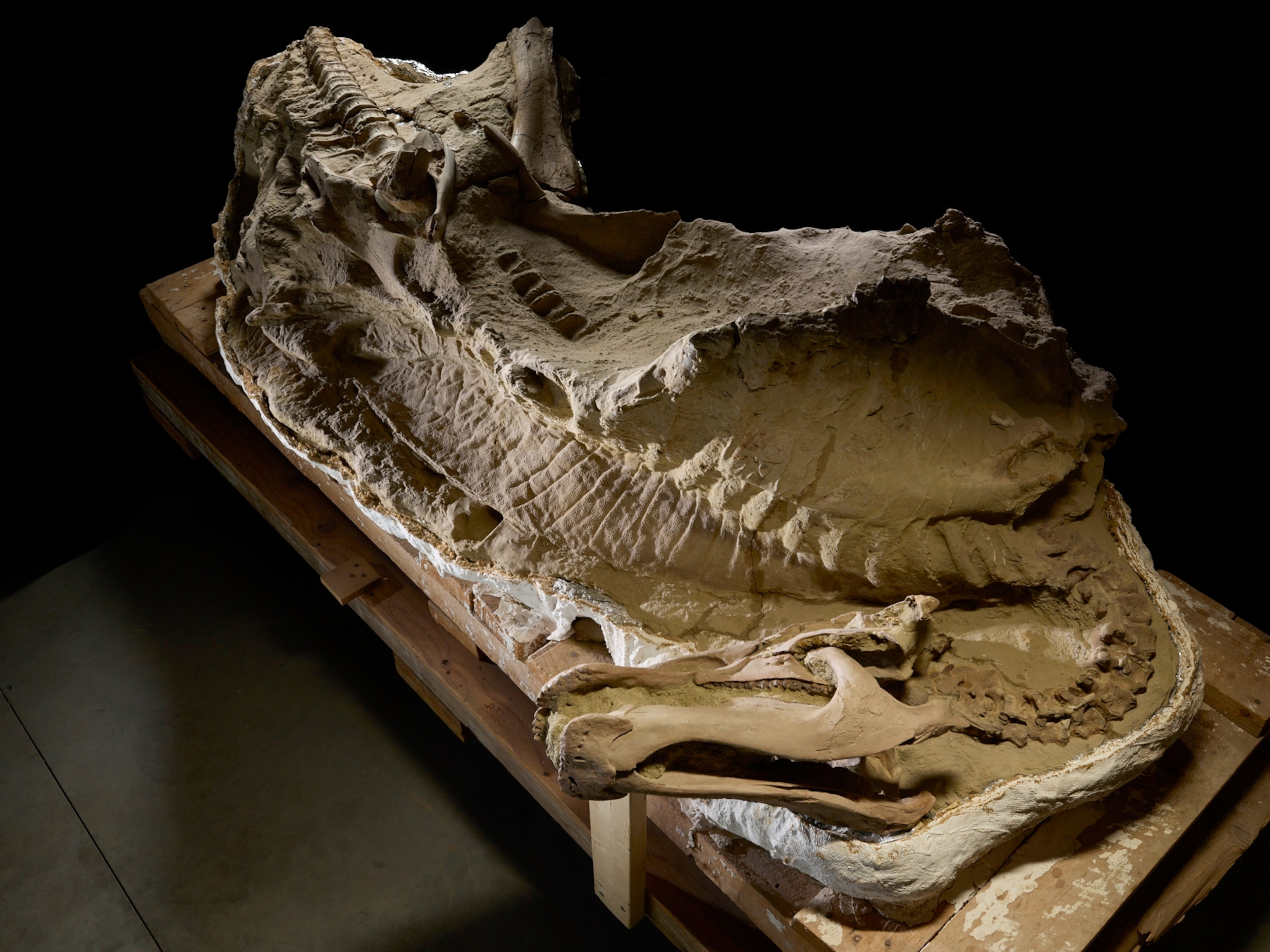Rare Fossils Reveal New Species of Ancient Gliding Mammals
Two exquisitely preserved finds from the Jurassic provide new clues to the evolution of airborne animals.
It’s not a bird or a plane—it’s more like a souped-up squirrel.
This week, paleontologists unveiled two remarkable new species of dainty gliding mammals that lived alongside dinosaurs nearly 160 million years ago.
While they are not the first mammalian gliders known from this time period, these specimens are unique because they have thin, furry membranes of skin attached to their front and back limbs that are clearly preserved in the rock.
“It is pretty obvious from looking at these fossils that they are gliders, due to the carbonized skin,” says study coauthor David Grossnickle, a Ph.D. candidate at the University of Chicago.
Named Maiopatagium furculiferum and Vilevolodon diplomyos, the two new species are offering clues to the ways various mammals have taken to the skies over evolutionary time scales.
“Gliding is one of the cutest and one of the most striking locomotor adaptations,” says study coauthor Zhe-Xi Luo, a paleontologist at the University of Chicago.
Furred Fossils
Both of the new gliders were found in the Liaoning region of China, which is famous for its stunning power of preservation. The Jurassic-era lake sediments have yielded some of the finest fossils in the world, including scads of feathered dinosaurs and a myriad of early mammals with carbonized fur and soft tissue.
Even without the conspicuously preserved skin, the newfound animals' well-preserved skeletal structures give away their gliding ability, the team reports in a pair of papers published this week in the journal Nature.
Grossnickle notes that the limb proportions of gliding mammals are quite different from those that simply climb trees or walk on the ground, and the two new specimens have limb proportions that are similar to modern gliding mammals.
Both fossils also have notable hands and feet, says Jin Meng, a paleontologist at the American Museum of Natural History who was not involved in either study.
“Our toes are very short because we have to walk on the ground," he says. "These animals have much longer fingers, showing they have adaptations for grabbing on trees in the forest.”
Grossnickle adds that in both fossils, the hands and feet are very similar to those on modern bats.
“These things could be using all four limbs to roost like bats,” he says, and it's even possible they spent time hanging upside-down from tree branches like modern flying lemurs.
From Land to Air
The two new gliding mammals are among 10 similar species known to have lived in this area during the Jurassic, and that diversity means there were plenty of ecological niches for them to occupy.
For instance, the newfound fossils display well-preserved teeth, giving paleontologists a rare up-close look at the dietary habits of these ancient airborne animals.
“Vilevolodon has a very complex tooth crown,” explains Luo, noting that the crown matches the ridge-filled molars of modern seed-eating squirrels. The teeth of Maiopatagium, on the other hand, are much simpler, indicating that it may have enjoyed feasting on soft fruits.
“They are both gliders, but there is a subdivision of feeding methods,” says Luo. The two species are also very different in stature: Maiopatagium was closer in size to a modern squirrel, while Vilevolodon was more mouse-size.
Taken together, the traits of these fossil gliders seem to back up the hypothesis that different groups of mammals followed a similar evolutionary pattern of being land-based, then moving to tree-climbing, then to gliding. Modern rodents and flying squirrels followed this pattern, along with Australian marsupials like sugar gliders.
“In the Jurassic forests, this group independently evolved this kind of locomotion like other living mammals that also glide," says Meng. "Mammals started experimenting with different locomotion types very early on.”








